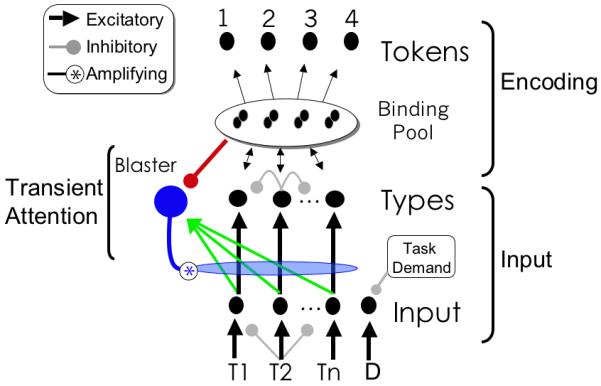Figure 5.

Schematics of the full eSTST model. Input from early visual areas excites input nodes and feedforward inhibition simulates backward masking. Task demand represents the influence of task instructions in specifying the category of targets, and acts by inhibiting distractor nodes, preventing them from entering working memory and triggering attention. Inhibition between type nodes simulates weak interference between coactive type representations.
